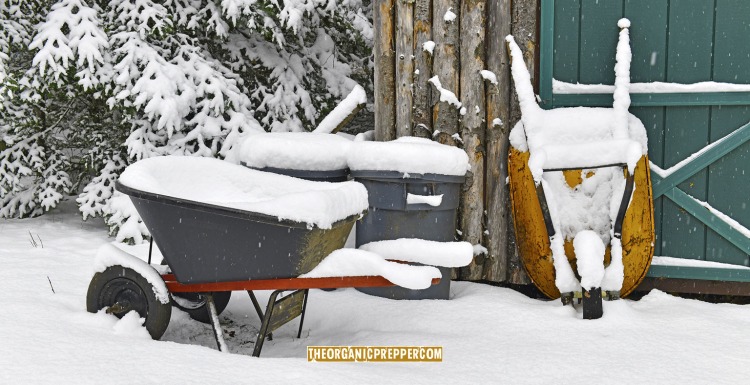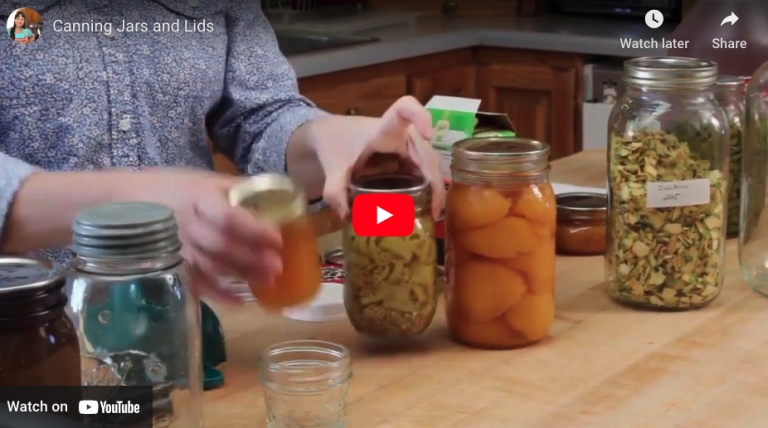(Psst: The FTC wants me to remind you that this website contains affiliate links. That means if you make a purchase from a link you click on, I might receive a small commission. This does not increase the price you’ll pay for that item nor does it decrease the awesomeness of the item. ~ Daisy)
Author of How to Prep When You’re Broke and Bloom Where You’re Planted online course
If you’re itching for gardening season to start, you’re in luck. You can start now with the clean-hands-no-backache part. Whether or not you’ve grown a garden before, there are plenty of winter garden tasks you can do during the colder months to get ready for spring. Not using this more barren time means that your planting will be delayed, and your harvests will not be as good as they would have if you had been ready to go.
Planning your garden is a crucial step in getting a decent bounty at harvest time, but there’s a lot more to it than just allocating space in your veggie plot. As I discussed a few years back in this interview, you need to work on becoming more self-sufficient NOW, regardless of where you live. You don’t have to have 30 acres in the country to produce at least some of your own food.
Here are a few things you can do during the winter.
Some of these things require that the snow already be melted, while others can be done even if it’s up to your knees.
1) Pick up any downed branches
Chop them into the appropriate sizes and set them aside for firewood or kindling. They’ll need to dry out for a season or two, but it’s a good way to add to your wood stash for free.
Bundling sticks for a perfect fire
2) Rake the leaves.
If the snow has melted, rake your garden to get rid of smaller debris and leaves. (I like this rake because the head is expandable and can work for various nooks and crannies.) Either bag up the leaves so they turn into mulch or add them to the compost bin.
3) Kick the composting into high gear.
If you have a smaller space, rotating compost bins are ideal and make compost super fast. They are the perfect size for those who need small amounts of compost for container growing.
4) Dig up any perennial weeds that have survived the winter.
If the snow has melted and the ground isn’t still frozen rock hard, you can begin attacking those stubborn weeds before things get overgrown. Check every week for new arrivals poking through especially as we move toward warmer weather.
5) Decide what you are going to grow.
Having a garden that can supply the maximum nutrients to you family will be of prime importance if the time comes when you can’t get to the store to stock up.
6) Order your seeds.
Be sure to buy heirloom seeds so you can save them year after year, something that will be critical after a long-term disaster. Get a wide a variety of seeds for long term storage. And come on, who doesn’t love curling up in front of the fire with a pile of seed catalogs?
We recommend Seeds for Generations, a small family business out of Virginia. You can go here right now and hit their big sale! They have a ton of varieties, and I’ve had excellent luck with the seeds I’ve bought there. And, you’re helping a small business instead of a Big Box.
7) Check for restrictions in your neighborhood.
The laws and regulations targeting small growers could potentially make growing your own veggies illegal. Many HOAs make it difficult to be self-reliant. Check your local regulations – no one wants to deal with the “garden police.”
8) Get your greenhouse ready.
Greenhouses should be completely emptied. Remember that rodents love make a cozy home in greenhouses. If you have one of the plastic ones (like this), they should be cleaned top to bottom to ensure no mood, spores or moss that can affect your tender plants are present.
9) Get your pots ready.
Do you save the little pots from the nursery to use year after year? Be sure to clean them properly to ensure they are free of anything that might contaminate your new plants. Check them for leaks or cracks before planting in them.
10) Test your soil.
If your soil isn’t too hard to dig up a little, it’s a great idea to check the chemistry of your soil so that you can be sure your veggies will thrive. This will help you figure out what type of amendments you will need.
Here are a few more articles that you may find useful:
Check out The OP garden archives AND our popular Home Agriculture Comprehensive course.
What are your favorite winter garden activities?
Do you like to start getting ready to garden early? What tasks can you do during this time of year when you’re itching to get your hands in the dirt?
Let’s talk about how to get your garden groove on before planting time in the comments section.
About Daisy
Daisy Luther is a coffee-swigging, adventure-seeking, globe-trotting blogger. She is the founder and publisher of three websites. 1) The Organic Prepper, which is about current events, preparedness, self-reliance, and the pursuit of liberty; 2) The Frugalite, a website with thrifty tips and solutions to help people get a handle on their personal finances without feeling deprived; and 3) PreppersDailyNews.com, an aggregate site where you can find links to all the most important news for those who wish to be prepared. Her work is widely republished across alternative media and she has appeared in many interviews.
Daisy is the best-selling author of 5 traditionally published books, 12 self-published books, and runs a small digital publishing company with PDF guides, printables, and courses at SelfRelianceand Survival.com You can find her on Facebook, Pinterest, Gab, MeWe, Parler, Instagram, and Twitter.

















